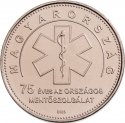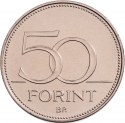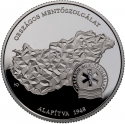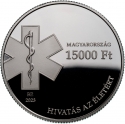You are about to finish your registration. Please check your mailbox (including spam folder). There should be a letter with a confirmation link. Check setting to make sure that your e-mail address is correct.
Send letter againDescription
The poem "Hymnus," which later became the national anthem of the Hungarian people, was penned by Ferenc Kölcsey during the early stages of Hungary's national revival in 1823, while he was in seclusion in Szatmárcseke. Originally titled "Hymnus, a’ Magyar nép zivataros századaiból", the poem was first published in 1829 in Károly Kisfaludy's almanac "Aurora" under the title "Hymnus." Three years later, it appeared in Ferenc Kölcsey's initial volume with a subtitle that clarified its thematic message. With this eminent work of patriotic poetry, Kölcsey steered Hungarian literary expression towards national romanticism, diverging from classical ideals.
The musical composition for "Himnusz" was created in 1844 by Ferenc Erkel, a noted composer and conductor, in response to a competition seeking a musical setting for the poem. The winning piece premiered at the National Theater in Pest later that same year.
In 1989, "Himnusz" received legal protection when it was formally enshrined in the Constitution, marking January 22nd as the Day of Hungarian Culture in commemoration of the date when Kölcsey completed the manuscript of the poem. By the 1989 Constitution, and later reaffirmed in Article I of the Fundamental Law effective January 1, 2012, "Himnusz" was officially declared Hungary's national anthem, composed by Ferenc Kölcsey with music by Ferenc Erkel.
Engraver: Tamás E. Soltra
Obverse

|
Depicts a panoramic-like representation of visual elements referring to the lyrics of the National Anthem, onto which rays emanate from a central triangle symbolizing the Holy Trinity. Surrounding the triangle, in a circular inscription, the text "STRETCH OUT A PROTECTIVE ARM TOWARDS HIM IF STRUGGLING WITH AN ENEMY" is written in the handwriting style of the original manuscript, with a small, upright square separating the beginning and end of the quotation. In the lower part, in the middle, the depiction of the tomb of Ferenc Kölcsey in Szatmárcseke is inserted into the representation of the rays, and to the right, the engraver's privy mark is placed. NYÚJTS FELÉJE VÉDŐ KART HA KÜZD ELLENSÉGGEL • |
|---|---|
Reverse

|
Depicts a half-length portrait of Ferenc Kölcsey, based on the 1835 painting by Anton Einsle, with the inscription "KÖLCSEY" inserted in the lower part of the portrait, and a contemporary quill pen in the foreground. Below the portrait, in two lines of handwriting, the inscription "Hymnus" is written in the style of the original manuscript, along with the year of creation "1823." To the right of the portrait, vertically, the inscription "HUNGARY" is visible. At the edge, in two lines beneath each other, on the left side, the year of issue "2023" and the mint mark "BP." are placed, while on the right side, the denomination and the inscription "FORINT" are featured. MAGYARORSZÁG |
| Edge |
Characteristics
| Type | Commemorative Issue (Non-circulating) |
| Material | Copper Nickel |
| Weight | 30.8 g |
| Diameter | 38.61 mm |
| Thickness | - |
| Shape |
|
| Alignment | Medal |
| Mint |
Budapest Mint (BP)
|
Related coins
75th Anniversary of the Hungarian National Ambulance Service
75th Anniversary of the Hungarian National Ambulance Service
75th Anniversary of the Hungarian National Ambulance Service







